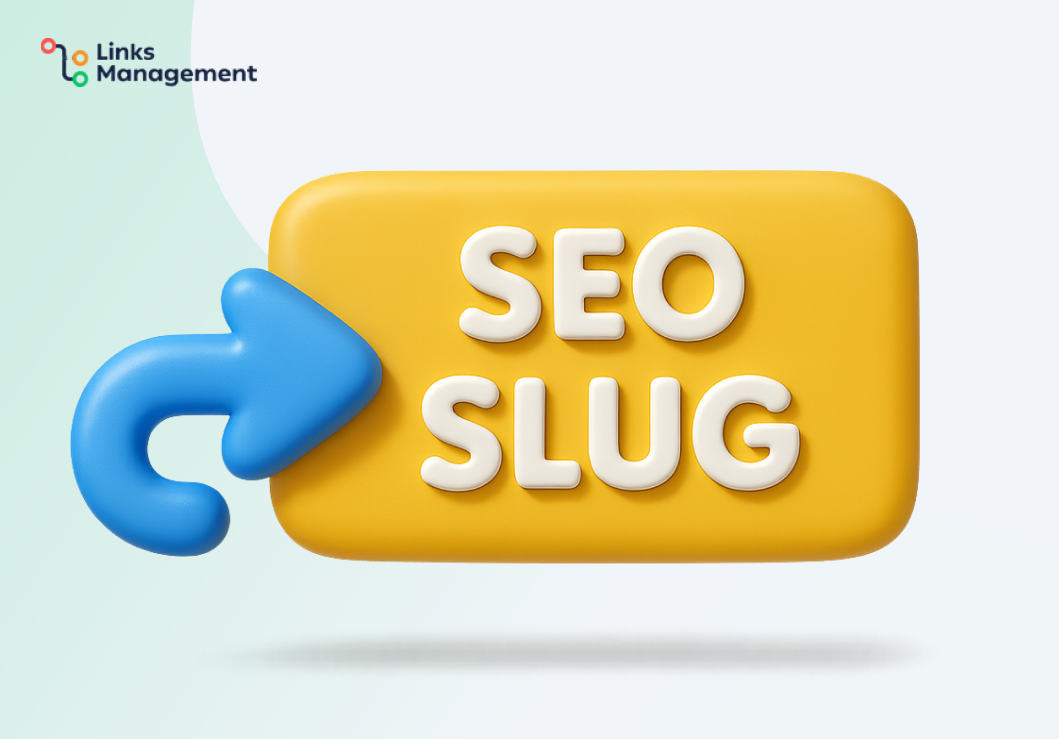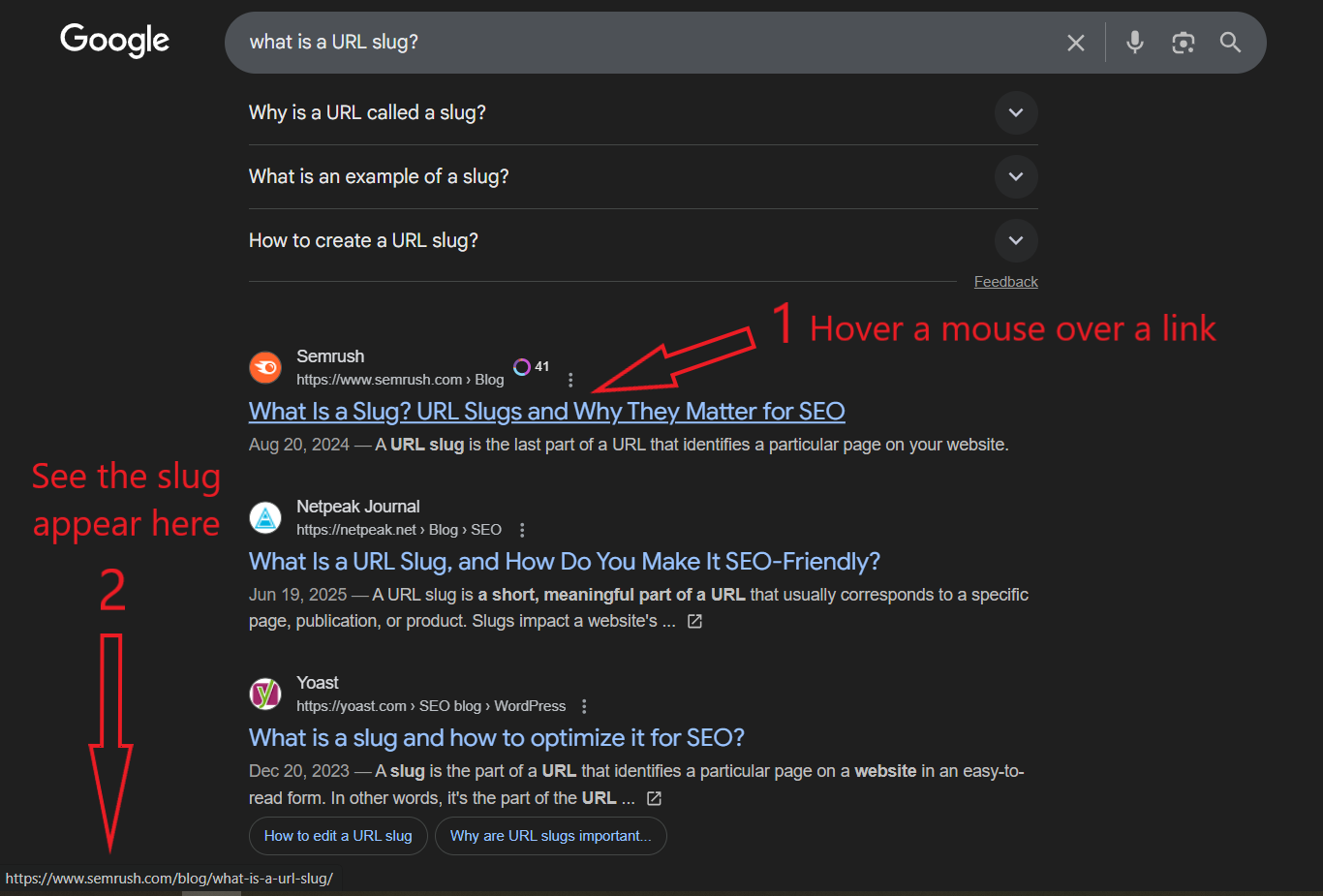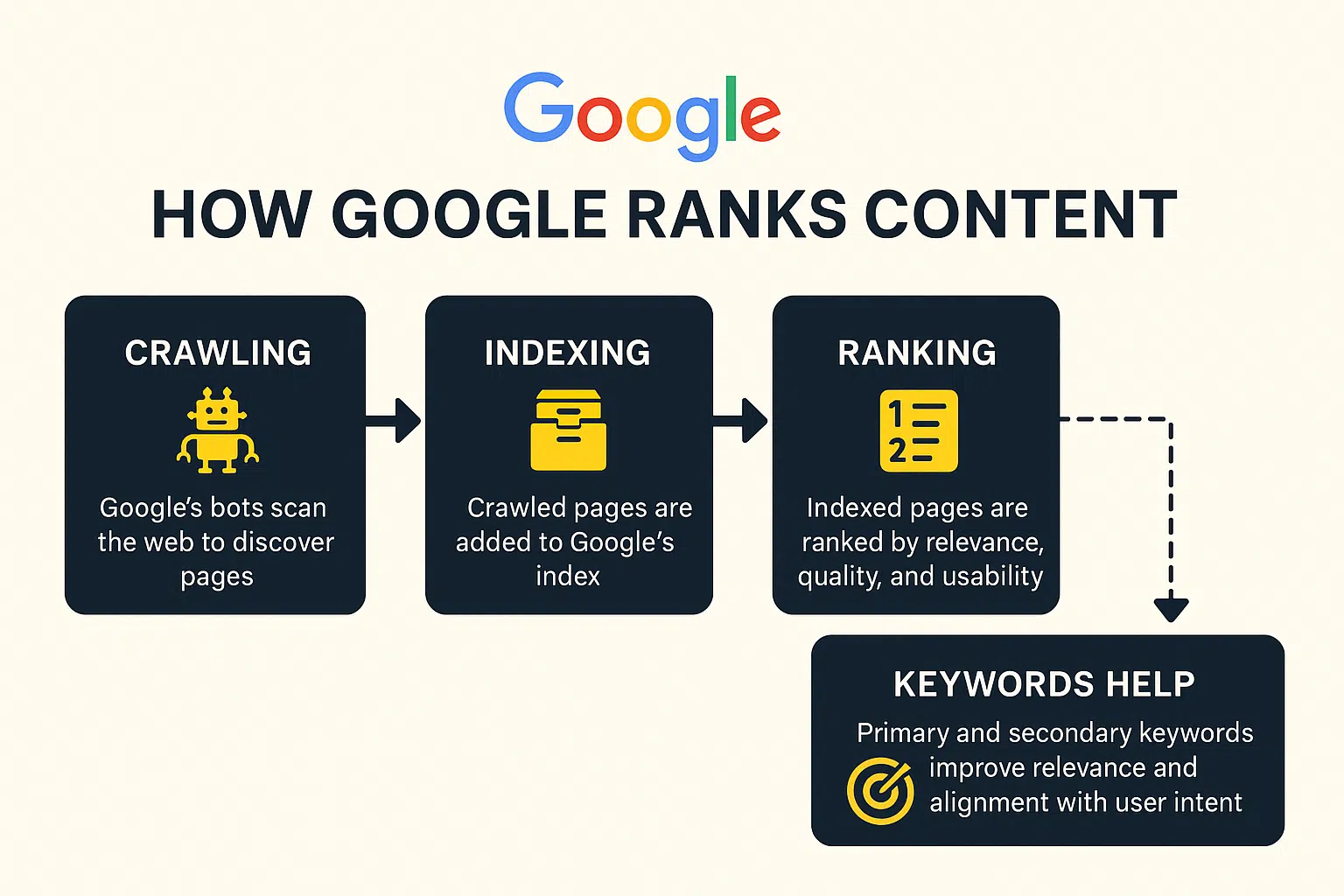What Is an SEO Slug, and Why Does It Matter for Rankings?
An SEO slug used in the website’s URL is easy to ignore. Yet, this seemingly insignificant and trivial web address element plays a key role in a site’s ranking and user experience.

Interestingly, the term “slug” isn’t what most people assume — it has nothing to do with garden creatures or bullets. Instead, its origin and meaning are totally different.
Curious to know the details? Read on — the first chapter reveals its true meaning.
What is an SEO Slug?
Let’s first answer a simpler question people also ask: What is a slug on a website’s URL? It is the last part of a URL address that comes after the domain name.
Slugs typically consist of a page’s (article, blog post, etc.) main words, separated by hyphens, but they skip the unnecessary, or low-value words like articles, prepositions, conjunctions, or pronouns.
✍️ For example:
https://www.linksmanagement.com/url-slugs/
In this example, the slug is short and simple: “url-slugs”. Just by glancing at these two words, a user can instantly understand what the current page/link is about. This reveals the main function of a slug — to aid in the understanding of a webpage by humans and bots alike.
Speaking in SEO terms, slugs improve user experience and search results ranking. That’s how the term SEO slug came to be. It’s a URL slug that is optimized for user experience (UX) and search ranking.
You can sometimes meet the following synonyms of a URL slug: URL identifier, URL path, URL handle, permalink slug, SEO-friendly URL, search-friendly URL, and others.
Not All Slugs Are SEO Slugs
Every SEO slug is technically a URL slug, but not every URL slug can be called a SEO slug. That’s because many URL slugs are bad slugs, i.e., not optimized for SEO. Here are a couple of bad URL slug examples:
✍️ # 1:
https://example.com/blog/post12345
Why it’s bad: No keywords, meaningless numbers, provides no context.
✍️ # 2:
https://website.com/products/item?id=98765
Why it’s bad: Uses query parameters instead of descriptive text.
Where the Term “Slug” Really Comes From
Finally, let’s shed light on the etymology of the term “slug”.
Surprisingly, it has nothing to do with slimy garden slugs or with bullets used in firearms. Instead, it comes from the old-days printing/publishing process, when a “slug” was a short line of metal used to label or identify content. It served as a unique identifier for a piece of text.
When digital publishing evolved, the same term was adopted to describe the “identifier for a piece of digital content.” Same term, different ages: one age adopted snail-speed hand-operated printing, another is based on lightning-fast, heavily automated digital content creation.
How Does URL Slag Impact SEO?
From the general phrases about the value of search-friendly URLs, let’s now move on to some specifics. In particular, we’ll explore the two major SEO benefits of a high-performing slug: user experience improvements and increased search engine relevance.
UX Improvements
Today, no search engine optimization practice can live without trust. Finicky users trust only credible sources, and they expect your URL to fit that criteria.
Google and other search engines make the search process transparent by displaying the full URL path when users hover their mouse pointer over SERP links (e.g., in Google, that path is usually displayed in the bottom left corner of the browser). If they see a messy URL identifier, the trust signal is not there, making a click unlikely.

Source: Google
However, if a user sees a clear and descriptive link path (an SEO slug), that’s a definite trust signal, boosting user experience and driving more clicks.
Key UX advantages of slug SEO include:
- Improved clarity: A descriptive slug helps users immediately understand page intent.
- Higher click confidence: Clean paths act as credibility signals in SERPs and social shares.
- Better engagement: When users know what to expect from the URL, they are more likely to stay and interact with the content.
Getting into SERP is a success, but it’s only half the journey. Once you’re visible, your slug SEO acts as the guidance system that directs users to click through and land on your page.
Without a clear and descriptive path, even a high-ranking page can fail to attract visitors. This simple URL element holds the power to boost user confidence that they are heading towards the right page.
Relevancy Improvements
Besides users, the web is quietly and constantly scanned by machines — search engine bots, or crawlers. According to some studies, bot traffic surpassed human traffic in 2024 and continues to increase.
It appears that these bots also pay attention to the relevance of your slugs. If it’s an SEO slug, they “understand” it better, and if it also matches some common user requests, the search engine’s algorithms position such a URL higher in their SERPs.
For example:
Using a slug “how-not-let-AI-steal-job” for a page that teaches users how not to let AI steal their jobs perfectly matches some hot search queries. This intent match improves the page’s relevance in the “eyes” of a search bot and increases its SERP ranking.
SEO Slug Best Practices
✅ For a URL identifier to be attractive to Google’s bots (and to deserve to be called a SEO-friendly URL), it has to meet the necessary requirements. Below, we list such requirements, which are officially “endorsed” by Google as the best slug practices:
Make it descriptive and understandable. An ideal and search-friendly URL should closely describe what the website/page is about. An accurate description is key for user (UX) and bot understanding.
It should also be concise, i.e., use fewer words to communicate the essence clearly and to avoid truncation in search results. For example:
- Bad slugs (generic, unclear):
- Good slugs (clear and descriptive):
/page123
/blog/post-5
/seo-slug-best-practices
/how-to-write-url-slugs
✅ Add keywords. Keywords help search crawlers match the URL with user intent and rank it accordingly in SERPs. For example:
- Bad — missing keywords and too generic, i.e., doesn’t indicate it’s about SEO slugs or URLs:
- Good (keyword-rich and intent-focused):
/tips-for-success
/seo-slug-optimization-tips
/url-slug-for-seo
🚨 Important: Avoid too many keywords in a single slug (keyword stuffing), which is equally bad as no keywords at all.

Source: Stellites
✅ Apply lowercase letters. Always use lowercase letters in your slugs. Search engines treat uppercase and lowercase URLs as different pages, which may create duplicate content and weaken your SEO performance.
- Bad slugs (uppercase used):
- Good slugs (all lowercase):
/Best-SEO-Tips
/WordPress-URL-Guide
/best-seo-tips
/wordpress-url-guide
✅ Use hyphens instead of any other symbols. Combining multiple words into a single string would be a mouthful no one’d ever pronounce (read). Instead, the best practice is to separate them with a symbol. Google recommends using a hyphen for this purpose, and that’s exactly what we’ve extensively used throughout our guide.
✅ Aim to avoid unnecessary words. Writing all words (even if those are only the main words) from your page title in a URL handle is a bad practice.
As mentioned earlier, low-value words like articles, prepositions, and conjunctions must be omitted. For example:
- Bad — includes unnecessary words (too long, contains articles and prepositions):
/what-is-the-best-tool-for-seo-on-the-internet
- Good — concise and focused on high-value keywords:
/best-seo-tool
✅ Don’t mention dates (if possible). Including years or dates in your slug can cause unnecessary updates and create outdated URLs over time. Unless absolutely necessary, avoid using dates to keep your slug evergreen and prevent future rework.
- Bad — includes a date:
- Good — timeless and reusable:
/seo-trends-2024
/seo-trends
✅ Maintain a uniform URL style on your site. Use the same slug formatting rules across your entire website (lowercase letters, hyphens instead of underscores, no stop words, etc.). Consistency enhances user trust, makes crawling easier for search engines, and supports a strong sitewide slug SEO strategy.
The more of the above-mentioned requirements a permalink slug meets, the higher its chances of getting into the top positions in SERPs. And vice versa, if it doesn’t meet several, and especially all requirements, Google’s bots will give it a low score and pass by.
Slugs in WordPress
For users who are not very technically savvy, we recommend using WordPress. It makes the process of creating SEO-friendly URLs more accessible and streamlined.

Source: WPexplorer
Here is what it can do:
1. Automatically generate slugs from page or post titles
Once you write your page or post title, WordPress auto-generates an optimal SEO slug for you. It saves your time by taking care of all the little practical things, like converting to lowercase and replacing spaces with hyphens.
The WordPress-created SEO path is available in the Sidebar → “Post” or “Page” Settings (in the right-hand settings panel, under the “Permalink” section, the slug field will be visible).
2. Let you edit the auto-created slug
In the same “Permalink” section, you can also edit the path. Why would you need to do that? You may want to add a specific keyword, shorten the slug further, remove extra words, or make it longer.
3. Help prevent duplicate slugs
That’s a highly useful feature, as duplicate slugs can harm your SEO, while you cannot check manually if the newly created identifier has any duplicates among your website pages, or elsewhere on the web. WordPress takes care of that and automatically appends a number, or prompts you to change it as you wish.
4. Integrate with SEO plugins
WordPress can be seamlessly integrated with popular SEO plugins like Yoast SEO, Rank Math, and All in One SEO. This can make your search-friendly URL even better by checking if your primary target word is included, whether the creator slug is too long (or too short to be sufficiently descriptive), and recommending removing unnecessary words (e.g., articles and prepositions).
Conclusion
A SEO slug has a disproportionately large (for its size) significance for one’s search engine performance. In particular, a descriptive and clear slug can boost user experience and signal more relevance to the search engines’ crawlers, who’ll place your page higher on SERPs.
Making a search-friendly URL is not difficult when you follow these five simple rules:
- Use descriptive, human-readable keywords that reflect page content.
- Keep your slug concise and remove unnecessary words like articles or prepositions.
- Include a primary keyword to match user search intent.
- Always use lowercase letters and separate words with hyphens.
- Avoid using dates or numbers that could make your URL outdated.
Finally, if you are short on time or don’t like too much manual work, you can leverage WordPress’s help. It can do all the above automatically and even integrate with other SEO plugins for additional functionality.
Enter URL & See What We Can Do Submit the form to get a detailed report, based on the comprehensive seo analysis.





